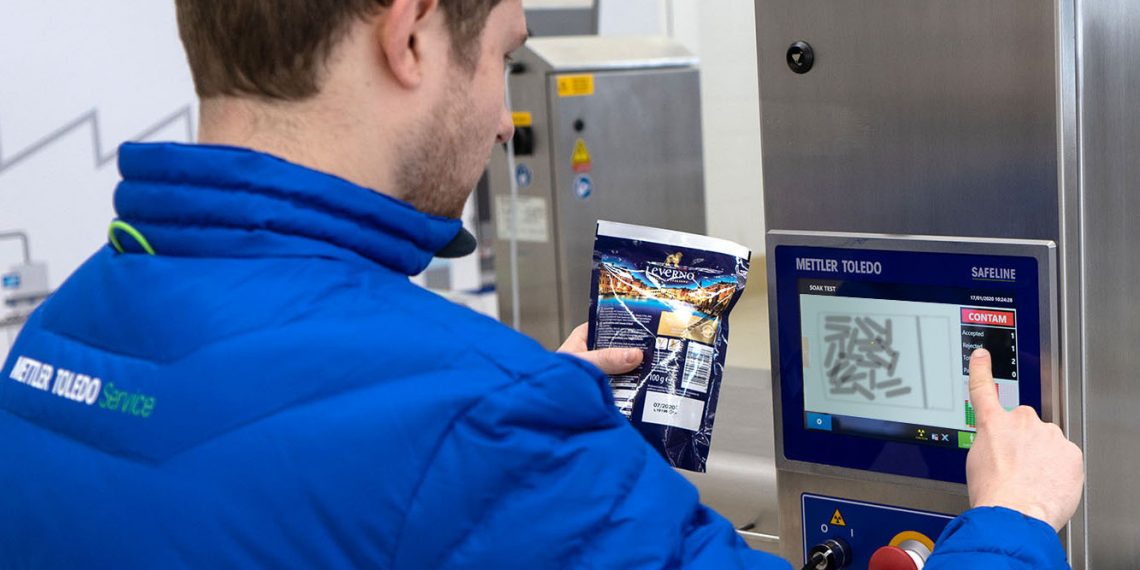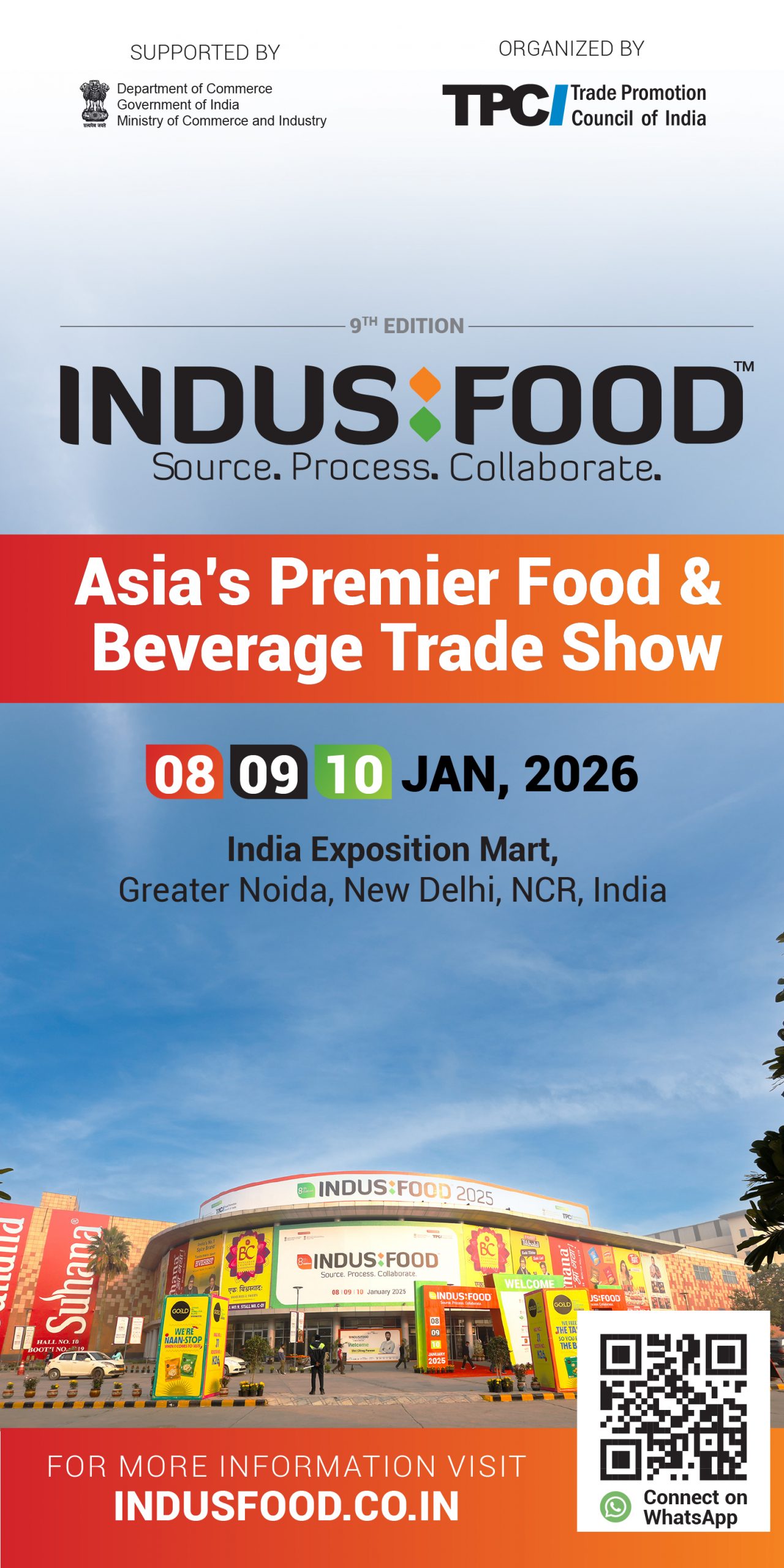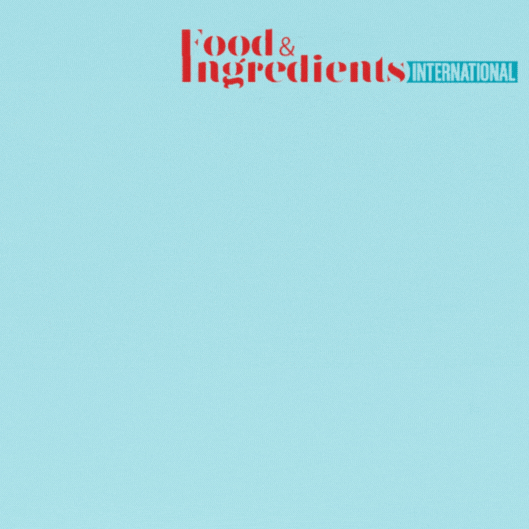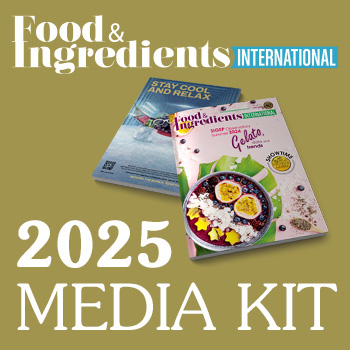Reducing the risk of food safety breaches is of paramount importance to all food manufacturers. Ian Robertshaw, Global Key Account Manager from Mettler-Toledo Product Inspection, outlines the key considerations they should make in tackling such a high-profile issue.
Food safety breaches are a serious matter, subject to ever-increasing scrutiny from governments, supply chain partners and consumers. Food manufacturers must display vigilance and commitment in trying to overcome the risks of foreign bodies or physical contaminants getting into the food chain, but these alone will not be enough – technology must also play its part.
The implementation of this technology requires good planning, based on an understanding of the nature of physical contamination, how it happens and how it can be mitigated against. This plan should be based on the following six steps:
- Understand the nature of contamination
Food contamination occurs in different ways, including foreign bodies such as stones, bones, metal and glass amongst raw materials, and contaminants being accidentally introduced by employees, or by production and packaging equipment during production.
However, food manufacturers must also be aware of factors that can make detection of a contaminant difficult. For example, contaminants with a similar or lower density to that of the product or packaging are an inspection challenge. Factors such as high salt or moisture content, temperature, size and shape, position and orientation on the production line, density, and type of packaging material, can all generate a “product effect” which can mask the presence of contaminants when using certain types of product inspection systems. Understanding these issues is a first step.
- Identify areas of weakness on your line
Formal frameworks exist to help food manufacturers assess their production processes and the most likely areas of risk for foreign body contamination to occur. Hazard Analysis and Critical Control Point (HACCP) and Hazard Analysis Risk-based Preventive Controls (HARPC) audits are designed to help manufacturers to identify weak points in the production line, from the raw material stage to packaging, where food safety hazards from physical contamination can occur.
From the results of these audits, the food manufacturer will know where to set up Critical Control Points (CCPs) and Preventative Control Points (PCPs), to best eliminate or mitigate against potential food safety hazards.
- Implement a strong line (or lines) of defence
Defences against foreign body contamination can be put in place at different parts of the production and packaging process, principally defined as early detection, during production, and end of the line.
Early detection includes inspecting raw and incoming materials before they are mixed, blended or processed further. Detecting physical contaminants at this stage has the additional benefit of protecting downstream processing equipment from potential damage by an undetected contaminant and ensuring that foreign bodies are removed before value-adding production processes take place.
During production, a second line of defence can inspect bulk or loose-flow products, virtually eliminating debris that might be a by-product of the grinding, pulping or blending process. Inspection at the end of the line represents a final check and could pick up contaminants introduced by a breakdown in the packaging process, such as glass splinters from the capping process.
- Select the appropriate technology
Metal detection and x-ray are the two main inspection technologies to consider. However, the right choice is not necessarily the obvious one. For example, x-ray is better at detecting a metal contaminant within metallized packaging. It can measure mass, count components, identify missing or broken products and damaged packaging, monitor fill levels, measure head space, and detect product in seal.
Metal detectors, meanwhile, are better suited to inspecting products in gravity-fed conditions such as vertical form, fill and seal (VFFS) applications. Sometimes, the right choice is actually a combination of both these inspection technologies.
- Future-proof detection capabilities
Contaminant detection capabilities should always be optimised for the specific product or application that it is producing at that moment however new products can be launched plus new demands can be placed on manufacturing facilities often due to seasonal production trends. To fulfil future production demands, food producers should consider how flexible the product inspection equipment is to accommodate other food products.
Modular systems allow companies to adapt to these evolving needs, while still satisfying compliance and productivity requirements. In addition, combination product inspection systems – where more than one inspection technology is integrated – can help alleviate any current or future issues around limited factory floor space.
- Embrace digitalization
Digitalization enables real-time monitoring and control of increasingly automated inspection devices. Collection of digital performance data, alongside system connectivity within the supply chain, can help to deliver transparency and traceability for all stakeholders in the food supply chain. Plus, in the event of a product recall, this transparency and traceability will be a key advantage.
The development of automated systems such as product inspection technology and networked supply chains supports higher quality standards in production. Together they can provide food manufacturers with the ability to quickly identify when machinery is not functioning optimally and take corrective action thereby reducing downtime. In addition, full documentation of product inspection activities supports food safety standard compliance purposes.
Conclusion
Food manufacturers need to be confident that they are on top of food safety. The implementation of these six steps prevent, detect and reject physical contaminants from their production processes. This confidence, that food products are free from foreign bodies, can also be shared with consumers, which can help to enhance a brand’s reputation.
Food safety incidents are too serious, and product recalls too costly, to take anything other than a smart, joined-up approach that incorporates optimised product inspection technology.





















